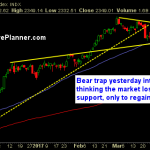The pending home sales index for July dropped 0.8 percent vs an Econoday expected gain of 0.4%.
The National Association of Realtors (NAR) also revised June pending sales from +1.5% to +1.3%.
NAR chief economist Lawrence Yun blames a “Staggering” Lack of Inventory.
Last month’s resurgence in pending home sales didn’t last long. Sales ended a three-month fad in June with a 1.5 percent increase in the Pending Home Sales Index (PHSI), but it dropped back by 0.8 percent in July. The National Association of Realtors®(NAR) says its PHSI registered 109.1 percent from a downwardly revised 110.0 in June. The June index was originally reported at 110.2.
The July number was 1.3 percent lower than the PHSI a year earlier and has now fallen year-over-year in three of the last four months. NAR said the West was the only region so show a slight gain.
Lawrence Yun, NAR chief economist, continues to blame the weak market on the lack of homes for sale and called the inventory woes throughout the country “staggering.”
According to Yun, in the past five years, the national median sales price has risen 38 percent, while hourly earnings have increased less than a third of that (12 percent). This unsustainable trend is putting considerable pressure on affordability in some markets – especially for prospective first-time buyers – and is pricing out some households who would otherwise be looking to buy a home. Despite this growing obstacle, Yun says data and feedback from Realtors® continues to confirm that the slowdown in existing sales since spring is the result of a supply problem and not one of diminished demand.
The PHSI is a leading indicator for housing sales. A sale is listed as pending when the contract has been signed; the transaction is usually expected to close within one or two months.
The index is based on a large national sample, typically representing about 20 percent of transactions for existing-home sales. An index of 100 is equal to the average level of contract activity during 2001, which was the first year to be examined. By coincidence, the volume of existing-home sales in 2001 fell within the range of 5.0 to 5.5 million, which is considered normal for the current U.S. population.











Leave A Comment